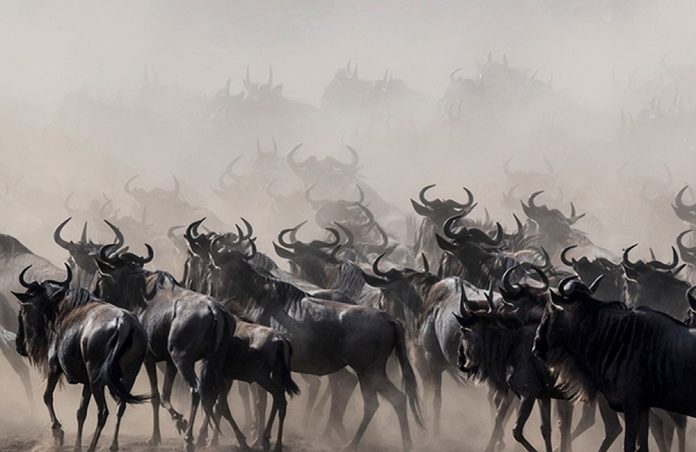Besides several other good reasons, the Masai Mara game reserve remains the most preferred wildlife safari destination in Kenya chiefly because of the great wildebeest migration. This well-documented and dramatic natural event involves over one million wildebeest accompanied by a few other antelopes and hundreds of thousands of zebras.
Some of the most thrilling moments of the migration are when the animals cross the crocodile-infested Mara river. These are the moments most tourists hope to witness when they book their safari to the Mara around July and August. Unfortunately, the migration is a very spontaneous event and therefore it is very hard to precisely predict when the herds will arrive from Serengeti national. Sometimes they cross into the Mara as early as late June, other times as late as September. This year (2019), the first crossing was witnessed in the first week of July (see this news article).
Even when not crossing the Mara or Grumeti rivers, the wildebeest are in almost constant movement within the Serengeti plains in Tanzania, with their migration pattern largely dependent on the rains and pasture availability. The migration therefore has no real beginning or end, the wildebeests start their unending pilgrimage the moment they are born.
What many people may not know is that, besides the wildebeest migration, there are other similarly spectacular sights involving wild animals in Africa. The bat migration in Zambia, and the Ruaha wildlife spectacle in Tanzania are some of these.
Zambia’s Mass Bat Migration
Every year in the October-December period, millions of straw-colored fruit bats move in mass through the Kansaka national park in Zambia. People who have witnessed this event regard it as one of the greatest wildlife spectacles in the world. Twice a day, at dawn and at dusk, the “flying foxes” blacken the skies as they fly to or from their night-time feasting on the seasonal fruits in Kasanka. During the day, the bats roost on every available tree in the forest, in itself an amazing sight to behold. Considering that Kasanka national park is not a very well-known wildlife destination, it is perhaps no surprise that such an astonishing event can remain almost unknown. One traveller who witnessed the migration first-hand describes it in the Wanderlust travel website.
The Ruaha wildlife spectacle
The national parks and game reserves in Tanzania’s southern safari circuit are largely unexplored, in comparison to those in the northern safari circuit. Probably because they are less accessible, these parks remain unchanged for centuries, and are wildlife havens.
Ruaha national park is one such park. It derives its name from the great Ruaha river, the site at which one of the most interesting wildlife drama takes place. Generally, the park is arid and very dry throughout the year. It is however driest from May to December, during which period all animals in the park are drawn to the banks of Ruaha river. With all these animals together, what unfolds right at the river banks is really dramatic: animals courting and mating, predators hunting down their prey, animals fighting, etc. Nowhere else in Africa will you get such a wildlife safari experience.
Ruaha national park has a lot more to write about. I will probably write a post about it in the near future.




















